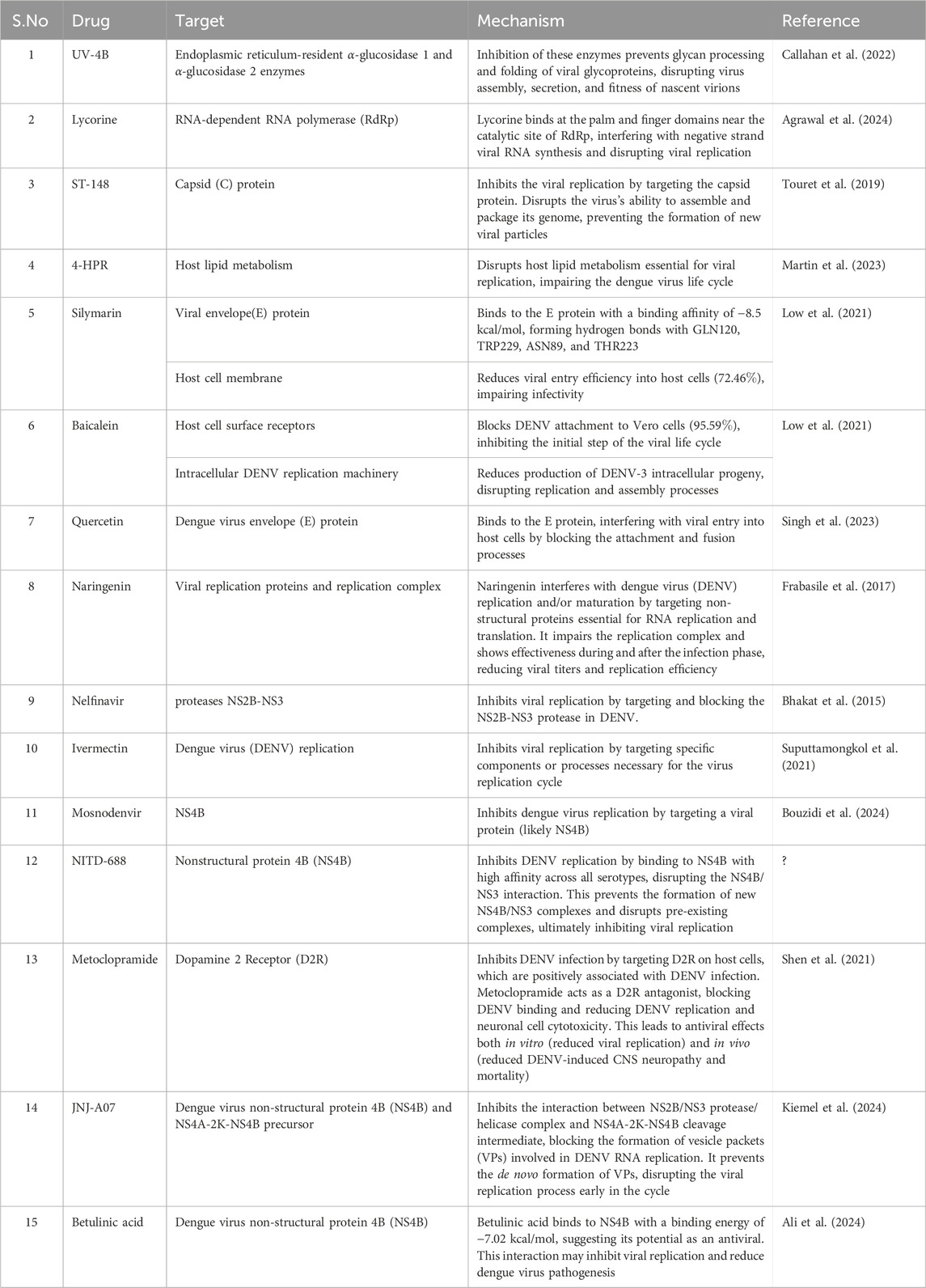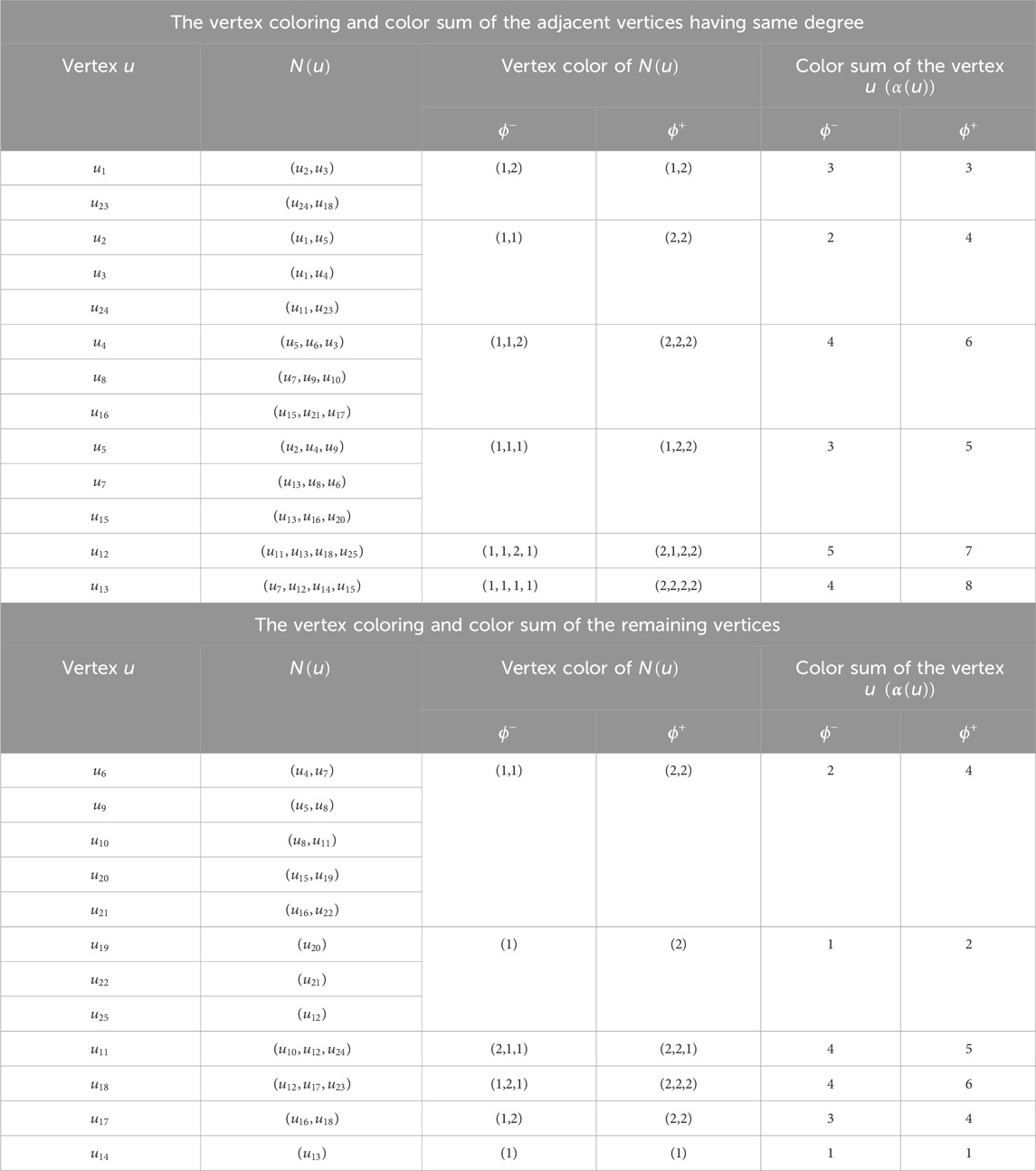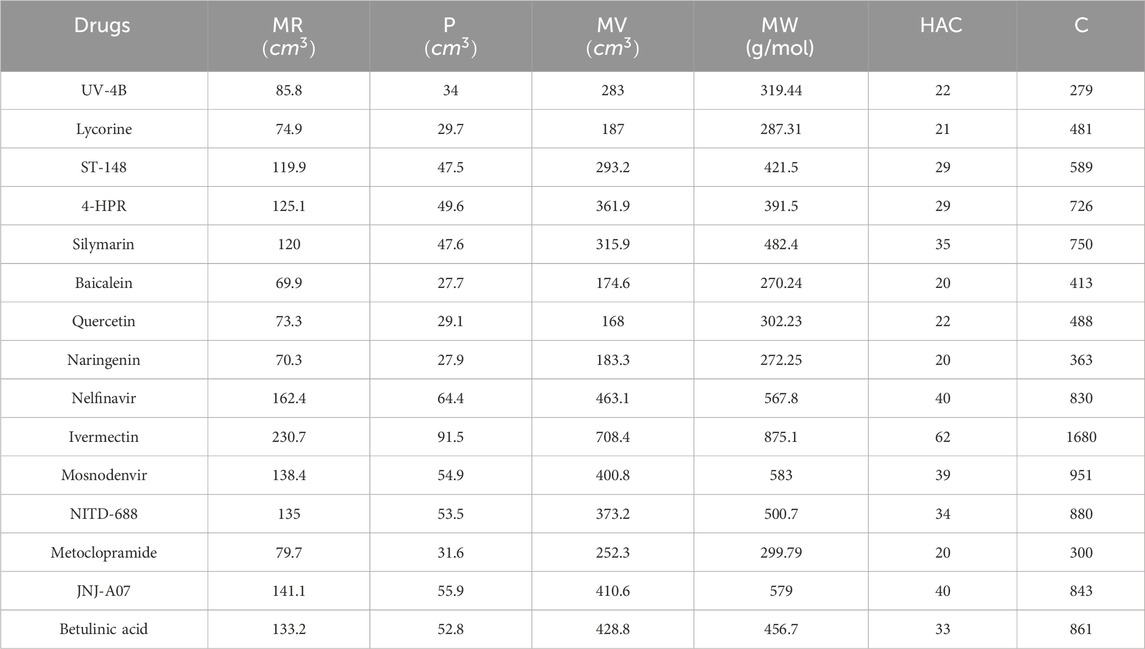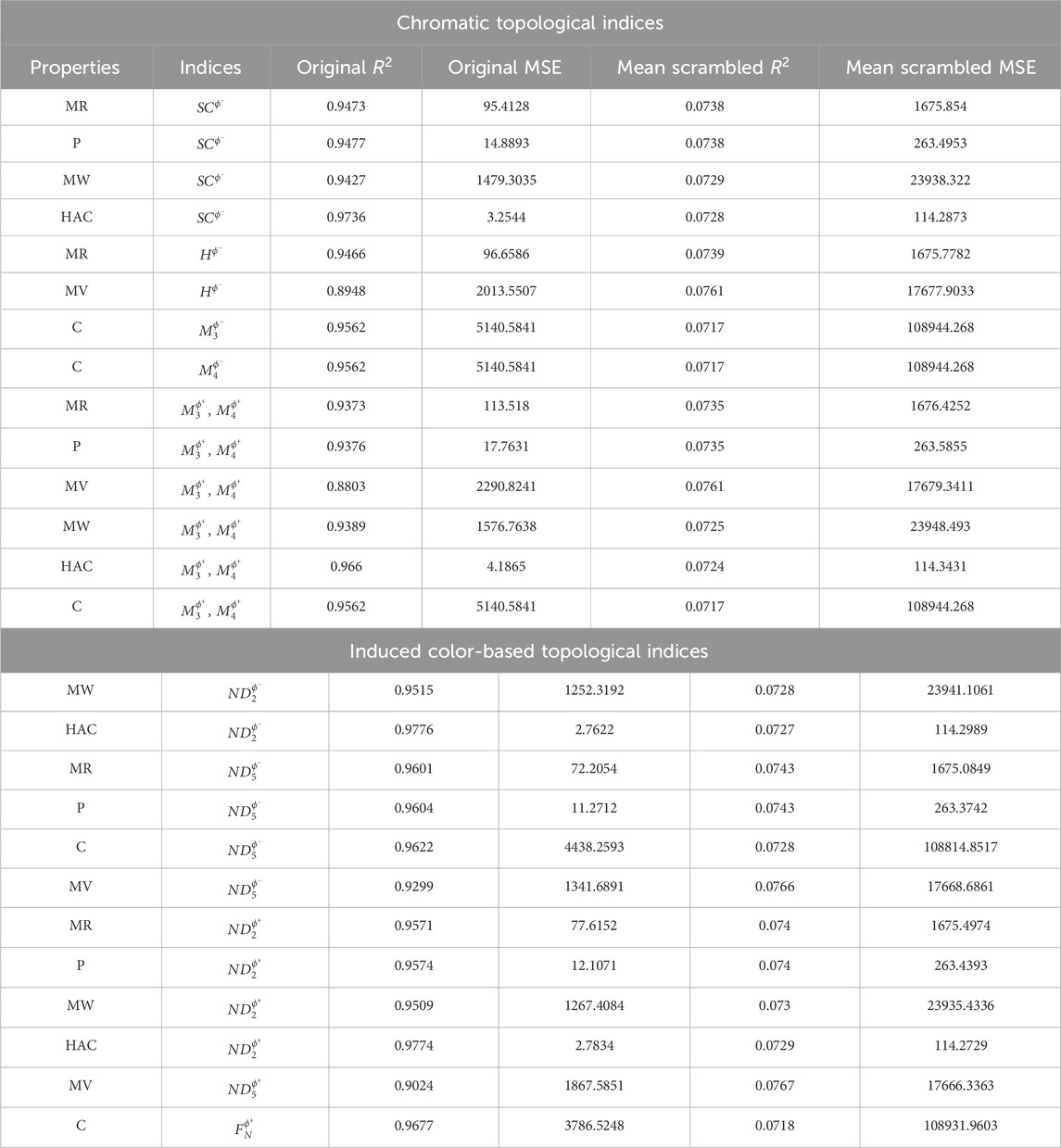- Department of Mathematics, School of Advanced Sciences, Vellore Institute of Technology, Chennai, Tamil Nadu, India
Dengue is a viral disease transmitted to humans through mosquito bites. Researchers have investigated various drugs with potential antiviral properties against it. Some of the promising antiviral drugs include UV-4B (N-9-methoxynonyl-1-deoxynojirimycin), Lycorine, ST-148, 4-HPR, Silymarin, Baicalein, Quercetin, Naringenin, Nelfinavir, Ivermectin, Mosnodenvir (JNJ-1802), NITD-688, Metoclopramide, JNJ-A07 and Betulinic acid. The chemical structure of a drug can be modelled as an isomorphic molecular graph
1 Introduction
An infectious virus called dengue infects people through the bite of infected mosquito species called Aedes. Tropical and subtropical regions are particularly at risk for dengue fever, which poses a significant public health threat. The signs and symptoms of dengue include high fever, severe headache, joint and muscle pain, rash, mild bleeding, pain behind the eyes, nausea, vomiting and mild respiratory problems. In severe cases, the symptoms may worsen and the individual may experience intense abdominal pain, persistent vomiting, rapid breathing, lethargy, restlessness, bleeding from the nose or gums, blood in vomit or stools and even organ failure. It also lead to drop in platelet count, which increases the risk of bleeding. It is hard to diagnose dengue fever since the symptoms of dengue is similar to many viral infections. Hence it is advised to run laboratory tests, such as reverse transcription-polymerase chain reaction (RT-PCR) or serological tests to diagnose and differentiate dengue from other infections. Numerous drugs have been evaluated through in vitro, in vivo and clinical studies to identify potential antivirals for dengue. In addition to these efforts, Dengvaxia, the first licensed dengue vaccine, has been developed to provide partial protection against dengue virus, although it is not a therapeutic antiviral. Furthermore, investigational drugs like JNJ-A07 and JNJ-1802, that target the dengue virus non-structural protein 4B (NS4B), have shown promising results in pre-clinical and clinical studies, demonstrating potent pan-serotype activity and potential to inhibit viral replication effectively. Several drugs have shown potential antiviral activity against the dengue virus, including UV-4B (N-9-methoxynonyl-1-deoxynojirimycin), Lycorine, ST-148, 4-HPR, Silymarin, Baicalein, Quercetin, Naringenin, Nelfinavir, Ivermectin, Mosnodenvir (JNJ-1802), NITD-688, Metoclopramide, JNJ-A07, and Betulinic acid. The targets and mechanisms of these drugs in combating the dengue virus are summarized in Table 1.
Chemical graph theory (Wagner and Wang, 2018) is a part of graph theory which combines the principles of chemistry and graph theory. In chemical graph theory, the molecular structure of a chemical compound can be modelled in terms of an isomorphic molecular graph
Topological index of a molecular structure is a numerical value computed based on the structure of a molecule graph. It converts the qualitative or abstract information of a molecule into a quantitative form. Various types of topological indices have been developed based on the different parameters of the molecular graph structures. These include distance-based indices, degree-based indices, neighborhood-based indices and connectivity-based indices. The Quantitative Structure-Property Relationship (QSPR) analysis of a molecular graph is carried out through the topological indices to establish mathematical relationships between the structural features of chemical compounds and their physical or chemical properties.
In recent studies, researchers have employed the Quantitative Structure-Property Relationship (QSPR) analysis using various topological indices to predict the physicochemical and ADMET (Absorption, Distribution, Metabolism, Excretion, and Toxicity) properties of diverse drug compounds. Among the various topological index variants, degree-based and neighborhood degree-based indices have been widely employed to evaluate their predictive capabilities for drug-like compounds. For instance, Tamilarasi and Balamurugan (2025) utilized these indices to predict the properties of antifungal drugs, while Arockiaraj et al. (2025) applied them to analyze compounds used in the treatment of lung cancer. Similarly, degree-based indices have been employed in the QSPR modeling of drugs targeting heart disease Kuriachan and Parthiban (2025); Hasani and Ghods (2024), blood cancer Zaman et al. (2024) and tuberculosis Abubakar et al. (2024). Their application extends to respiratory diseases as well, with studies exploring treatments for asthma Balasubramaniyan and Chidambaram (2023) and COVID-19 Ugasini Preetha et al. (2024); Das et al. (2023). It is noteworthy that these degree-based indices have been widely applied across various diseases, highlighting their utility and predictive power. In addition to degree-based indices, distance-based topological indices have also proven effective. For instance, Sardar and Hakami (2024) employed the distance-based indices to predict properties of drugs used in Alzheimer’s disease, while Huang et al. (2023) focused on anticancer agents. Recent literature also highlights the use of more specialized topological variants. Density-based indices were applied to study monkeypox-related drugs Kalaimathi and Balamurugan (2023), while reverse-sum Revan indices found use in analyzing antifiloviral drugs Tamilarasi and Balamurugan (2022). Thilsath parveen and Siddiqui (2024) explored domination distance-based indices and Shi et al. (2025) investigated temperature-based indices to model the properties of anticancer compounds.
In graph theory (Bondy and Murty, 2008), a graph coloring of the graph
The graph coloring finds various applications in chemistry, particularly in representing molecular structures. The assignment of colors to the vertices helps in differentiating the types of atoms or functional groups within a molecule (Huckvale et al., 2023; Jin et al., 2020). In reaction network analysis, vertices are represented as chemicals and the two vertices are connected by an edge if the two chemicals are reactive with each other. Coloring these vertices facilitates the separation of reactive chemicals, aiding the chemical manufacturing industry in efficiently (optimally) storing non-reactive chemicals together in their warehouses. The minimum number of colors used determines the minimum number of compartments or rooms required for storing the chemicals. Graph coloring is also applicable in conformational analysis, enabling the identification of structural similarities or differences. Different isomers can be colored distinctly, contributing to the systematic exploration of atom alignments in a molecular structure.
The topological indices based on graph coloring can provide a comprehensive understanding of the molecular graphs, facilitating the prediction of the physical and chemical properties of the molecules. Therefore, the chromatic topological indices emerges in the field of chemical graph theory. Unlike traditional indices, these coloring-based indices provide an alternate method for analyzing molecular structures, to understand how the arrangement of colors influences the molecular properties.
The notion of chromatic topological indices was introduced by Johan kok et al. in (Kok et al., 2016). For any color set,
In (Albina and Manonmani (2022); (2021); (Kok et al. (2017); Rose and Naduvath (2018)) the chromatic topological indices of some classes of graphs were determined. Following this, Smitha) Rose and Sudev Naduvath introduced several variants of chromatic indices viz., chromatic total irregularity index (Rose and Naduvath, 2020a), injective chromatic zagreb indices (Rose and Naduvath, 2019), injective chromatic total irregularity index (Rose and Naduvath, 2019), equitable chromatic zagreb indices (Rose and Naduvath, 2020b) and equitable chromatic irregularity index (Rose and Naduvath, 2020b). In (Rose and Naduvath, 2019) and (Rose and Naduvath, 2020b), they computed the injective and equitabe chromatic Zageb indices and injective and equitabe chromatic total irregularity index for the Mycielskian graphs of path and cycle. Later, in (Rose and Naduvath, 2020a), they computed the chromatic total irregularity index for path and cycle.
Motivated by the exploration of various coloring-based topological indices, six new chromatic topological indices and ten new induced color-based topological indices are introduced in this article. The induced color-based indices distinguish themselves by providing a unique method to analyze the molecular structures through the color sum of the vertices.
The coloring-based topological indices have not yet been explored especially in the context of their effectiveness in predicting properties through QSPR analysis. To address this research gap, the performance of chromatic topological indices and induced color-based indices are investigated in this article in the context of molecular graph modeling for QSPR analysis. The coloring techniques considered, namely, the proper vertex coloring and sigma coloring have distinct theoretical significance in structural analysis of the molecular structures. The relevance of these coloring techniques and their foundational importance are discussed in detail in the Section 3.1.
Specifically, the induced color-based and chromatic topological indices are computed for 15 potential antivirals of dengue disease. QSPR analysis is performed through these indices and linear regression to explore the physicochemical properties of dengue antivirals. Further, the comparative analysis of the two types of indices is performed to identify the potential indices to predict the properties of drugs.
2 Isomorphic molecular graph
The concept of isomorphic molecular graph of a chemical structure is discussed in this section.
2.1 Motivation
Wiener (1947) introduced two topological indices, namely, Wiener index and polarity index for alkane molecules. He considered the skeletal structures of alkanes and represented them as molecular graphs to predict their boiling points. In the skeletal structures, the hydrogen atoms bonded to carbon atoms are not explicitly shown. Researchers have extensively computed various topological indices for chemical compounds to predict their properties, often using simplified molecular graph representations. These simplifications typically involve depleting hydrogen atoms and treating double and triple bonds as a single edges. Computing the Wiener index for the simplified molecular graph of a chemical compound does not affect the index value, as the Wiener index is a distance-based topological indices. Later, Ivan Gutman and Oskar E. Polansky (Gutman and Polansky, 2012) introduced the concept of a complete molecular graph, where the molecular graph includes hydrogen atoms but multiple bonds are still represented as single edges. The absence of double or triple bonds in the graph, however, leads to the non-existence of the corresponding chemical structure. Moreover, this simplification particularly affects the degree-based topological indices, as the degree of a vertex varies depending on the multiplicity of its bonds. Consequently, indices calculated using this simplified approach may yield misleading data. These limitations are addressed by W Tamilarasi et al., in (Tamilarasi and Balamurugan, 2024) by introducing an accurate representation of chemical structure as an isomorphic molecular graph. In this representation, double bonds are represented as two parallel edges, triple bonds as three parallel edges and hydrogen atoms are preserved in their adjacency. This approach preserves the unique structural characteristics of the molecule, allowing for accurate comparison and analysis. Therefore, in this article, the isomorphic molecular graph is considered to represent the chemical structure of the potential antivirals of dengue.
Definition 1:. (Tamilarasi and Balamurugan, 2024). Let
An example of isomorphic molecular graph is shown in Figure 1.
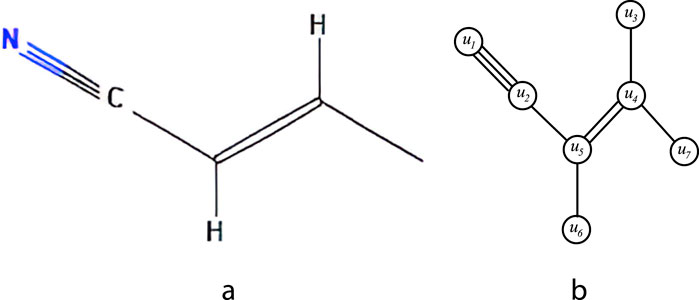
Figure 1. (a) Chemical structure of 2-butenenitrile (b) Isomorphic molecular graph of 2-butenenitrile.
3 Sigma coloring of isomorphic molecular graph and its significance
In this section, the concept of vertex coloring relevant to this article is discussed. Furthermore, the concept of sigma coloring and its significance are presented with appropriate examples.
Definition 2:. Let
Definition 3:. Let
Definition 4:. Let
Definition 5:. Let
Definition 6:. (Chartrand et al., 2010) Let
Throughout the article, the values inside the circles represent the proper vertex coloring, while the values outside the circles correspond to the sigma coloring. In sigma coloring, the values outside the brackets is the initial color assigned to the vertex and the values inside the bracket denote the color sum of the vertex.
Example 1:. The chemical structure of dopamine is shown in Figure 2a and the vertex coloring and sigma coloring of the isomorphic molecular graph of Dopamine are shown in Figure 2b.

Figure 2. (a) Chemical structure of Dopamine (b) Vertex coloring and sigma coloring of isomorphic molecular graph of Dopamine.
3.1 Motivation and significance of sigma coloring
In the sigma coloring of an isomorphic molecular graph
Let type 1 carbon atoms be those with a single bond and type 2 carbon atoms be those with a double bond. Cyclohexane contains only type 1 carbon atoms, cyclohexene and cyclohexadiene contain both type 1 and type 2 carbon atoms, while benzene contains only the type 2 carbon atoms. The objective is to distinguish each type of atom through sigma coloring. Initially, the atoms of the isomorphic molecular graph are colored and the color sum of atoms are calculated. If no two adjacent atoms have the same color sum then the type of carbon atom are effectively distinguished based on the assigned colors.
If two adjacent carbon atoms in the isomorphic molecular graphs of cyclohexane, cyclohexene, cyclohexadiene and benzene share a double bond then they are assigned with different colors; otherwise, adjacent carbon atoms are assigned the same color. Hydrogen atoms in the molecule are colored such that the sum of the colors of neighboring atoms of any two adjacent atoms remains distinct.
Let

Figure 3. (a) Sigma coloring of isomorphic molecular graph of Cyclohexane (b) Sigma coloring of isomorphic molecular graph of Cyclohexene (c) Sigma coloring of isomorphic molecular graph of Cyclohexadiene (d) Sigma coloring of isomorphic molecular graph of benzene.
Define the cyclic sequence of carbon atom
From the sigma coloring of cyclohexene and benzene, it is observed that if there is an odd pair of type 2 carbon atoms, then there is a pair of carbon atoms where one is of type 1 and the other is of type 2, and they are colored differently. That is,
Unlike other colorings, sigma coloring employs the minimum number of colors. In this approach, any natural numbers can be used to color the atoms(vertices), but the number of colors considered must be minimal. Therefore, the atoms(vertices) in the isomorphic molecular graph can be assigned(colored) with numbers associated with the atoms present in the molecule such as atomic number, mass number oxidation state and so on. For instance, considering the atomic number of all the atoms in a molecule, among them choose the minimum number of colors that satisfies sigma coloring. This shows that sigma coloring allows us to incorporate numerical data associated with the atoms to color the vertices of the graph. Thus, sigma coloring proves to be an effective method for studying molecules.
The following is the general observation of sigma coloring of graphs, which will be used in the proof of the theorem.
Observation 1:. (Chartrand et al. 2010) Let G be a molecular graph. Then
4 Chromatic and induced color-based topological indices
Let
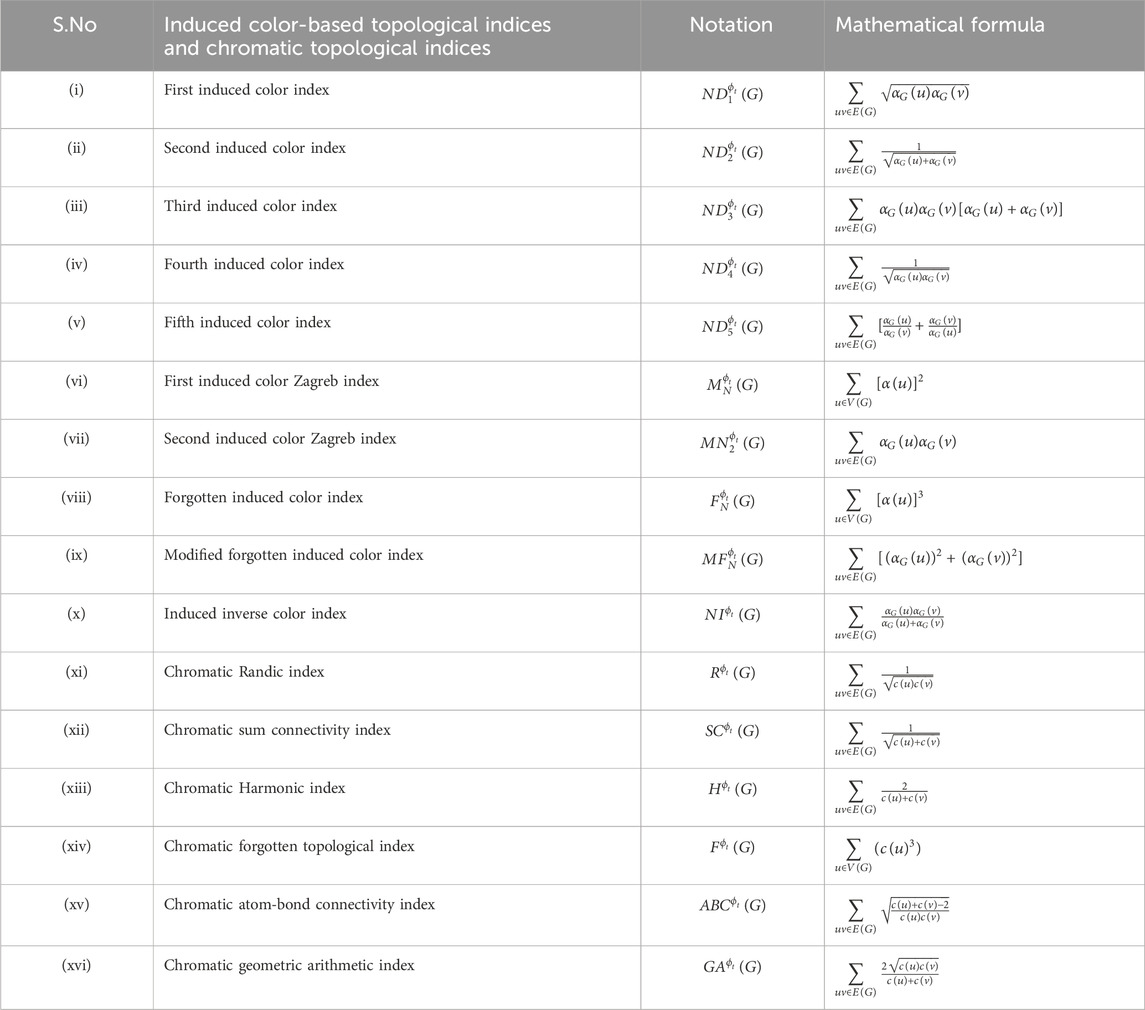
Table 2. Induced color-based topological indices and chromatic topological indices with their notations and mathematical formulas.
The induced color-based topological indices are computed using the graph coloring variants, where the vertex colors are derived from an initial assignment of vertex or edge colors. Examples of some of such variants include sigma coloring, closed sigma coloring, additive coloring, modular coloring, closed modular coloring, antimagic labeling and lucky labeling. In induced color based topological indices,
The induced color-based topological indices capture the influence of neighboring vertices or incident edges, whereas chromatic indices utilize graph coloring attributes to represent molecular features.
Let
Let
1. The first chromatic Zagreb index of
2. The second chromatic Zagreb index of
3. The chromatic irregularity index of
4. The chromatic total irregularity index of
Let
These topological indices form the basis for QSPR analysis to improve the predictive accuracy of analysis in determining the physicochemical properties of antiviral drugs of dengue. The induced color-based topological indices are computed using a graph coloring variant known as sigma coloring, while the chromatic topological indices are calculated using the proper vertex coloring.
5 Methodology
A systematic approach is employed to analyze the properties of potential antiviral drugs for dengue disease through the Quantitative Structure-Property Relationship (QSPR) graph modelling by considering the topological descriptors of the isomorphic molecular graphs of the drugs. The methodology consists of the following key steps:
1. Data Collection and Isomorphic Molecular Graph Construction
Potential antiviral drugs for dengue were selected based on their efficacy. The molecular structures of these drugs were obtained from publicly available database PubChem whose URL is pubchem.ncbi.nlm.nih.gov. Each chemical structure was then modelled as an isomorphic molecular graph.
2. Computation of Topological Indices
The chromatic and induced color-based topological indices of the molecular graphs were computed through two distinct coloring approaches namely, proper vertex coloring and sigma coloring respectively.
3. QSPR Analysis
The QSPR analysis was conducted to explore the relationship between the computed topological indices of molecular graphs and physicochemical properties of antiviral drugs used for dengue treatment. Linear regression analysis was performed using the Statistical Package for the Social Sciences (SPSS) software, applying statistical methods to evaluate the strength and significance of these correlations.
4. Statistical Analysis and Descriptor Evaluation
The predictive capability of the computed indices was assessed using the following statistical parameters:
The most effective indices were identified based on their predictive power and statistical significance, offering a robust framework for understanding the molecular properties of antiviral drugs used in dengue treatment.
6 Computation of chromatic and induced color-based topological indices of potential antivirals of dengue
In this section, the
6.1 Computation of chromatic topological indices
Let
1. Partition the vertices into independent sets.
2. Compute
The color
3. Compute the
The color
Theorem 1:. Let
Proof. Let
The graph
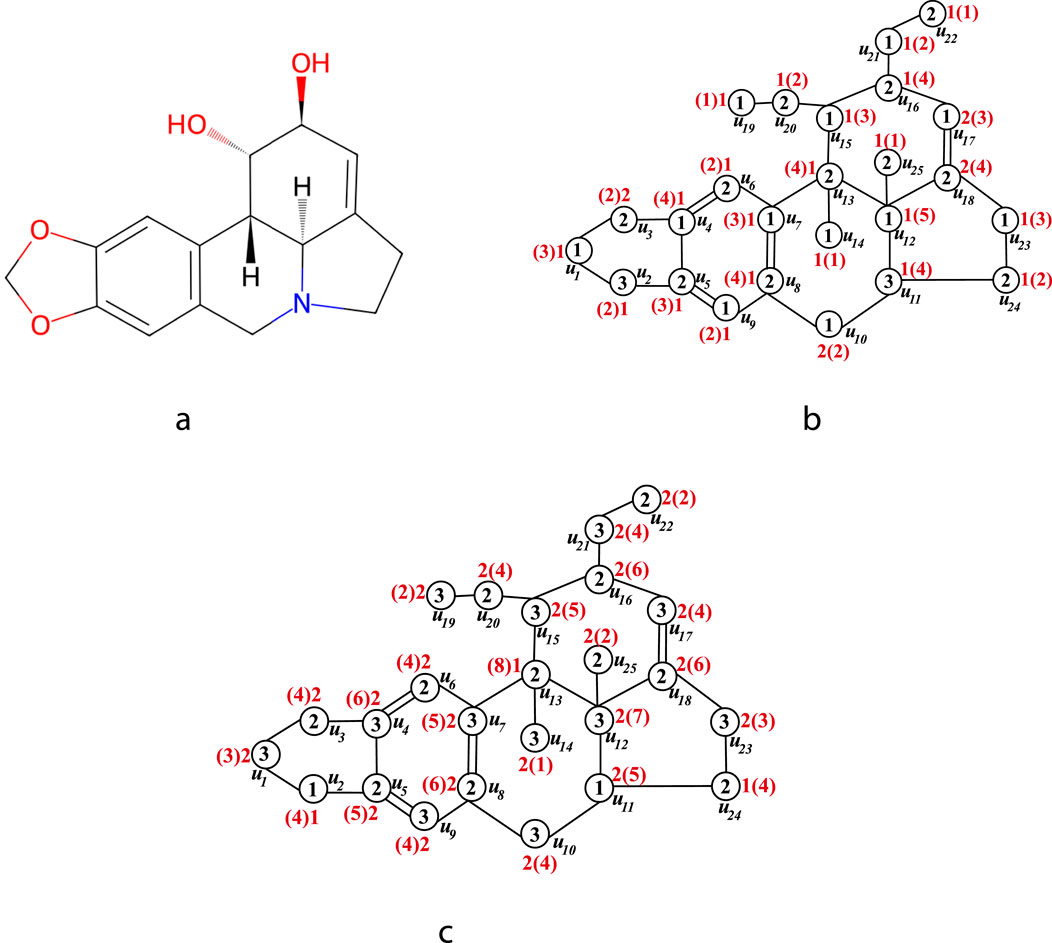
Figure 4. (a) The chemical structure of lycorine (b) The
6.1.1 Case 1.
In the case of
The number of vertices colored 1, 2 and 3 are 12, 11 and 2 respectively. Similarly, the number of end vertices of an edge with the color pair (1,2), (1,3) and (2,3) are 24, 3 and 2 respectively. Using the mathematical expressions presented in the Table 2 and in Section 4, the following chromatic topological indices are computed.
6.1.2 Case 2.
In the case of
The number of vertices colored 1, 2 and 3 are 2, 11 and 12 respectively. Similarly, the number of end vertices of an edge with the color pairs (1,2), (1,3) and (2,3) are 2, 3 and 24 respectively. Using the mathematical expressions presented in the Table 2 and in Section 4, the following chromatic topological indices are computed.
In a similar manner, the chromatic topological indices for the isomorphic molecular graphs of UV-4B (N-9-methoxynonyl-1-deoxynojirimycin), ST-148, 4-HPR, Silymarin, Baicalein, Quercetin, Naringenin, Nelfinavir, Ivermectin, Mosnodenvir (JNJ-1802), NITD-688, Metoclopramide, JNJ-A07 and Betulinic acid are computed. The

Table 3. The computed chromatic topological indices through
6.2 Computation of induced color-based topological indices
Let
1. If two adjacent vertices, say
2. If two adjacent vertices, say
Theorem 2:. Let
Proof. Let
Let
From the isomorphic molecular graph of
By comparing the
Using the
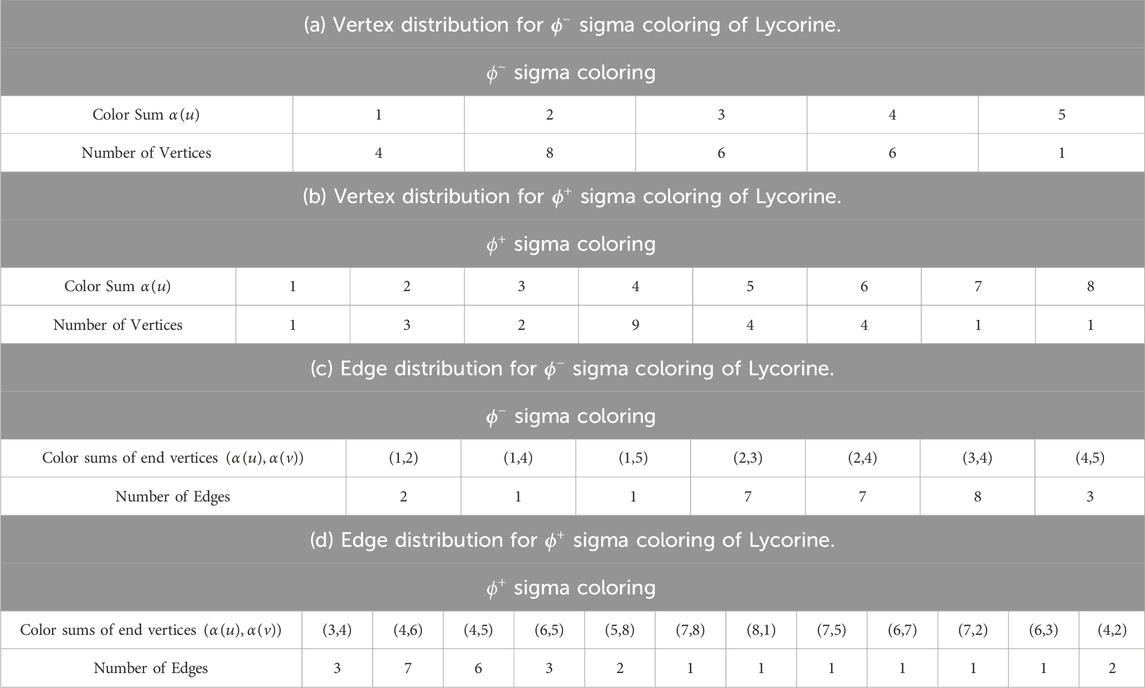
Table 5. The vertex and edge distribution based on color sums of vertices in
The following are the induced color-based indices of
The Table 5 presents the values necessary for the efficient computation of induced color-based topological indices in
The following are the induced color-based indices of
In Figure 4, the values inside the circles represent the proper vertex coloring, while the values outside the circles correspond to the sigma coloring. In sigma coloring, the numbers outside the brackets indicate the initial vertex color, whereas the numbers inside the brackets represent the vertex color sum.
In similar manner, the induced color based topological indices are calculated for UV-4B (N-9-methoxynonyl-1-deoxynojirimycin), ST-148, 4-HPR, Silymarin, Baicalein, Quercetin, Naringenin, Nelfinavir, Ivermectin, Mosnodenvir (JNJ-1802), NITD-688, Metoclopramide, JNJ-A07 and Betulinic acid. The
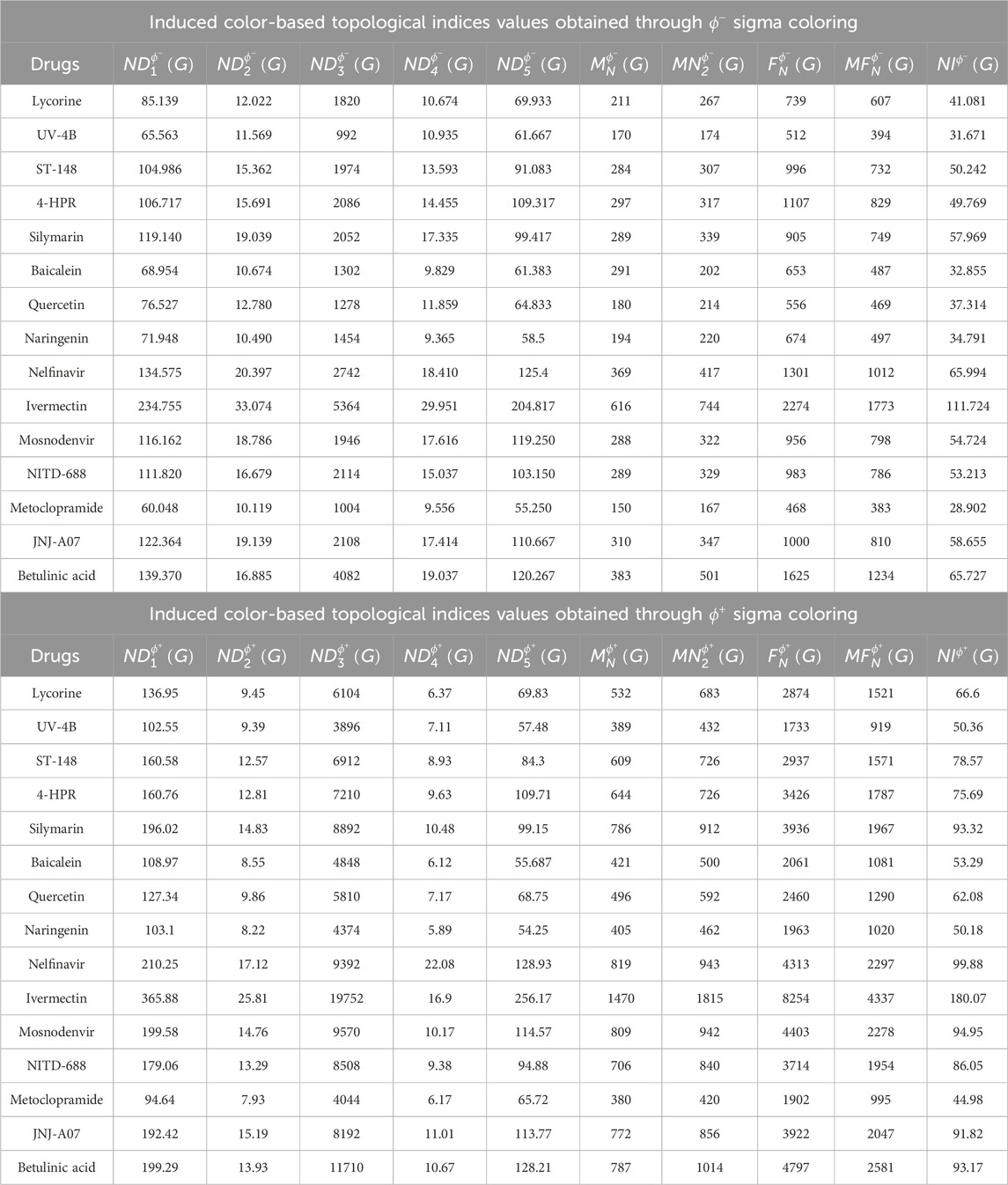
Table 6. The computed induced color-based topological indices through
7 QSPR analysis for physicochemical properties of potential antivirals of dengue
The QSPR analysis is carried out between the computed topological indices and physicochemical properties of antiviral drugs for dengue disease, namely, UV-4B (N-9-methoxynonyl-1-deoxynojirimycin), Lycorine, ST-148, 4-HPR, Silymarin, Baicalein, Quercetin, Naringenin, Nelfinavir, Ivermectin, Mosnodenvir (JNJ-1802), NITD-688, Metoclopramide, JNJ-A07 and Betulinic acid. The physicochemical properties of these drugs are tabulated in Table 7 and they were obtained from the database www.chemspider.com. The properties considered for the QSPR analysis include Molar Refraction (MR)
The linear regression
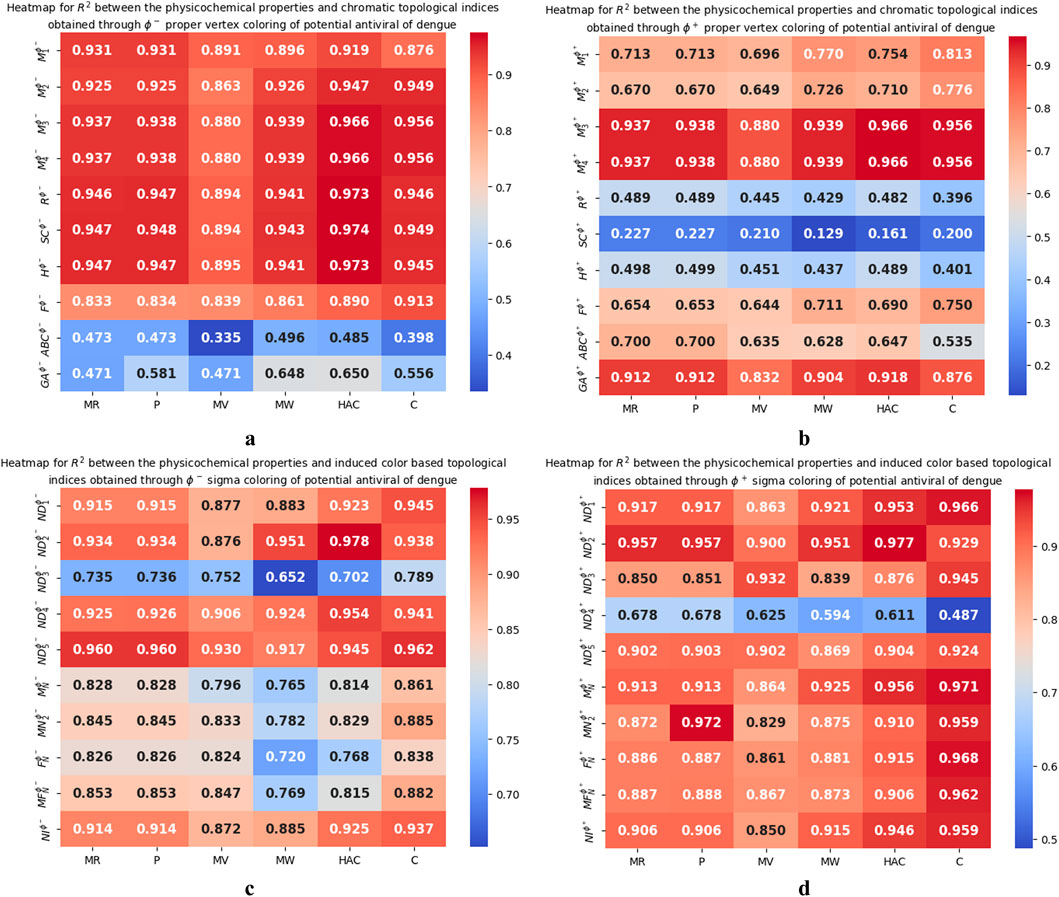
Figure 5. (a) Heatmap of
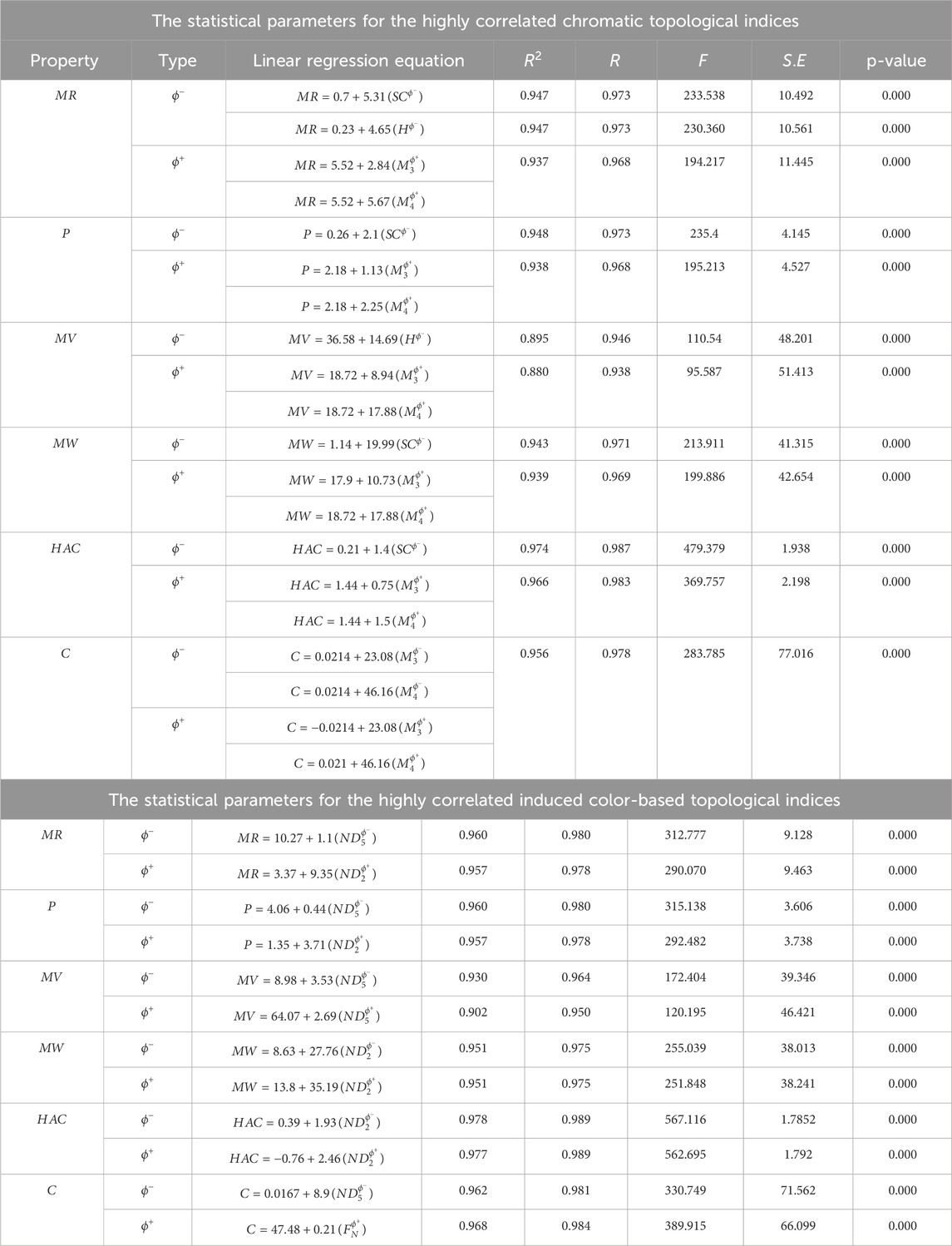
Table 8. The statistical parameters for the highly correlated chromatic topological indices and induced color-based topological indices.
The

Figure 6. The linear regression curve of (a)
8 Y-randomization test
The Y-randomization test (also known as response permutation test) is performed to ensure that the developed QSPR analysis is not influenced by chance correlations. This test is a crucial validation technique in QSPR analysis to assess whether the observed relationship between the physicochemical properties and the computed topological indices are statistically significant.
In this procedure, the dependent variable (Y-values), representing the physicochemical properties, is randomly shuffled, while the independent variables (X-values), representing the topological indices, remain unchanged. A linear regression is then trained on the randomized dataset, and its coefficient of determination
The original and scrambled
8.1 Inference from Y-randomization test
(i) The original R2; values for the physicochemical properties of potential antivirals of dengue disease are consistently high, with most values close to or exceeding 0.8. This indicates that the regression models effectively explain a significant proportion of variance in the observed data. Additionally, the original MSE values are low, demonstrating the accuracy of the predictions.
(ii) The mean scrambled R2; values remain consistently low (approximately 0.07 across all properties), suggesting a weak or nonexistent relationship between the scrambled observed values and the predicted values. Furthermore, the mean scrambled MSE values are substantially higher than the original MSE values, confirming that randomization disrupts predictive accuracy.
(iii) The substantial difference between the original and scrambled R2; values, along with the significant difference in MSE values, underscores that the predictive performance of the analysis is not attributable to random chance.
These results affirm that the regression models effectively capture meaningful relationships between the computed topological indices and the physicochemical properties of the considered dengue-treating drugs. Consequently, the Y-randomization test validates the statistical significance and robustness of the QSPR linear regression analysis.
9 Results and discussion
The chromatic topological indices that yield the highest correlation in the QSPR analysis for the physicochemical properties of UV-4B (N-9-methoxynonyl-1-deoxynojirimycin), Lycorine, ST-148, 4-HPR, Silymarin, Baicalein, Quercetin, Naringenin, Nelfinavir, Ivermectin, Mosnodenvir (JNJ-1802), NITD-688, Metoclopramide, JNJ-A07 and Betulinic acid are as follows:
(i) The
(ii) The
(iii) The
(iv) The
The induced color-based topological indices that yield the highest correlation the QSPR analysis for the physicochemical properties of UV-4B (N-9-methoxynonyl-1-deoxynojirimycin), Lycorine, ST-148, 4-HPR, Silymarin, Baicalein, Quercetin, Naringenin, Nelfinavir, Ivermectin, Mosnodenvir (JNJ-1802), NITD-688, Metoclopramide, JNJ-A07 and Betulinic acid are as follows:
(i) The
(ii) The
(iii) The
(iv) The
(v) The
9.1 Comparison of chromatic topological indices and induced color-based topological indices
The predictive capabilities of the newly introduced chromatic topological indices and induced color-based topological indices are compared to analyze their ability to model physicochemical properties. Notably, the induced color-based topological indices demonstrated consistently higher correlations, with
10 Conclusion
Ten novel induced color-based topological indices and six chromatic-based topological indices were introduced to analyze the molecular structures of the antiviral drugs of dengue. The induced color-based indices were computed through sigma coloring, while chromatic topological indices were derived from proper vertex coloring. The QSPR analysis was performed between the physicochemical properties of dengue treating drugs and the computed topological indices of their molecular structures of the drugs. The results showed that the specific induced color-based indices such as the second induced color index
11 Future work
(i) QSPR graph model proposed in this article can be extended to other chemical molecules and drugs to explore their properties
(ii) The Quantitative Structure-Activity Relationship(QSAR) and Quantitative Structure-Toxicity Relationship(QSTR) analysis can be performed between the computed topological indices and other properties through the induced color-based topological indices and chromatic topological indices for the potential antivirals of dengue.
(iii) The analysis of isomorphic molecular graph of chemical molecules through color based topological indices will provide us with the best model to predict the properties of the molecules.
Data availability statement
The original contributions presented in the study are included in the article/Supplementary Material, further inquiries can be directed to the corresponding author.
Author contributions
CY: Formal Analysis, Writing – original draft, Software, Data curation, Conceptualization, Investigation, Validation, Writing – review and editing, Methodology. BB: Writing – original draft, Supervision, Methodology, Writing – review and editing, Conceptualization, Validation, Formal Analysis.
Funding
The author(s) declare that financial support was received for the research and/or publication of this article. The article processing fee for open access is funded by the Vellore Institute of Technology, Chennai, India.
Acknowledgments
The authors thank the Vellore Institute of Technology, Chennai, India-600127 for the financial support and encouragement to carry out this research work. Also the authors would like to thank the reviewers and editor for their valuable comments and suggestions for the improvement of this article.
Conflict of interest
The authors declare that the research was conducted in the absence of any commercial or financial relationships that could be construed as a potential conflict of interest.
Generative AI statement
The author(s) declare that no Generative AI was used in the creation of this manuscript.
Publisher’s note
All claims expressed in this article are solely those of the authors and do not necessarily represent those of their affiliated organizations, or those of the publisher, the editors and the reviewers. Any product that may be evaluated in this article, or claim that may be made by its manufacturer, is not guaranteed or endorsed by the publisher.
Supplementary material
The Supplementary Material for this article can be found online at: https://www.frontiersin.org/articles/10.3389/fchem.2025.1599715/full#supplementary-material
References
Abubakar, M. S., Aremu, K. O., Aphane, M., and Amusa, L. B. (2024). A qspr analysis of physical properties of antituberculosis drugs using neighbourhood degree-based topological indices and support vector regression. Heliyon 10, e28260. doi:10.1016/j.heliyon.2024.e28260
Agrawal, T., Siddqui, G., Dahiya, R., Patidar, A., Madan, U., Das, S., et al. (2024). Inhibition of early rna replication in chikungunya and dengue virus by lycorine: in vitro and in silico studies. Biochem. Biophysical Res. Commun. 730, 150393. doi:10.1016/j.bbrc.2024.150393
Albina, A., and Manonmani, A. (2021). Chromatic topological indices of VPH(m,n) and nanotorusn and nanotorus. Int. Adv. Res. J. Sci. Eng. Technol. 8, 123–127. doi:10.17148/IARJSET.2021.8622
Albina, A., and Manonmani, A. (2022). Computation of chromatic zagreb indices of nanotubes and nanotori. AIP Conf. Proc. 2385, 130041. doi:10.1063/5.0071149
Ali, S., Ali, U., Safi, K., Naz, F., Jan, M. I., Iqbal, Z., et al. (2024). In silico homology modeling of dengue virus non-structural 4b (ns4b) protein and its molecular docking studies using triterpenoids. BMC Infect. Dis. 24, 688. doi:10.1186/s12879-024-09578-5
Arockiaraj, M., Jeni Godlin, J., Radha, S., Aziz, T., and Al-Harbi, M. (2025). Comparative study of degree, neighborhood and reverse degree based indices for drugs used in lung cancer treatment through qspr analysis. Sci. Rep. 15, 3639. doi:10.1038/s41598-025-88044-x
Balasubramaniyan, D., and Chidambaram, N. (2023). On some neighbourhood degree-based topological indices with qspr analysis of asthma drugs. Eur. Phys. J. Plus 138, 823. doi:10.1140/epjp/s13360-023-04439-7
Bhakat, S., Delang, L., Kaptein, S., Neyts, J., Leyssen, P., and Jayaprakash, V. (2015). Reaching beyond hiv/hcv: Nelfinavir as a potential starting point for broad-spectrum protease inhibitors against dengue and chikungunya virus. RSC Adv. 5, 85938–85949. doi:10.1039/C5RA14469H
Bouzidi, H. S., Sen, S., Piorkowski, G., Pezzi, L., Ayhan, N., Fontaine, A., et al. (2024). Genomic surveillance reveals a dengue 2 virus epidemic lineage with a marked decrease in sensitivity to mosnodenvir. Nat. Commun. 15, 8667. doi:10.1038/s41467-024-52819-z
Callahan, M., Treston, A. M., Lin, G., Smith, M., Kaufman, B., Khaliq, M., et al. (2022). Randomized single oral dose phase 1 study of safety, tolerability, and pharmacokinetics of iminosugar uv-4 hydrochloride (uv-4b) in healthy subjects. PLOS Neglected Trop. Dis. 16, e0010636. doi:10.1371/journal.pntd.0010636
Chartrand, G., Okamoto, F., and Zhang, P. (2010). The sigma chromatic number of a graph. Graphs Comb. 26, 755–773. doi:10.1007/s00373-010-0952-7
Das, S., Rai, S., and Kumar, V. (2023). On topological indices of molnupiravir and its qspr modelling with some other antiviral drugs to treat covid-19 patients. J. Math. Chem. 62, 2581–2624. doi:10.1007/s10910-023-01518-z
Frabasile, S., Koishi, A. C., Kuczera, D., Silveira, G. F., Verri Jr, W. A., Duarte dos Santos, C. N., et al. (2017). The citrus flavanone naringenin impairs dengue virus replication in human cells. Sci. Rep. 7, 41864. doi:10.1038/srep41864
Gutman, I., and Polansky, O. E. (2012). Mathematical concepts in organic chemistry. Berlin, Heidelberg: Springer.
Hasani, M., and Ghods, M. (2024). Topological indices and qspr analysis of some chemical structures applied for the treatment of heart patients. Int. J. Quantum Chem. 124, e27234. doi:10.1002/qua.27234
Huang, L., Wang, Y., Pattabiraman, K., Danesh, P., Siddiqui, M. K., and Cancan, M. (2023). Topological indices and qspr modeling of new antiviral drugs for cancer treatment. Polycycl. Aromat. Compd. 43, 8147–8170. doi:10.1080/10406638.2022.2145320
Huckvale, E. D., Powell, C. D., Jin, H., and Moseley, H. N. (2023). Benchmark dataset for training machine learning models to predict the pathway involvement of metabolites. Metabolites 13, 1120. doi:10.3390/metabo13111120
Jin, H., Mitchell, J. M., and Moseley, H. N. (2020). Atom identifiers generated by a neighborhood-specific graph coloring method enable compound harmonization across metabolic databases. Metabolites 10, 368. doi:10.3390/metabo10090368
Kalaimathi, M., and Balamurugan, B. (2023). Topological indices of molecular graphs of monkeypox drugs for qspr analysis to predict physicochemical and admet properties. Int. J. Quantum Chem. 123, e27210. doi:10.1002/qua.27210
Kiemel, D., Kroell, A.-S. H., Denolly, S., Haselmann, U., Bonfanti, J.-F., Andres, J. I., et al. (2024). Pan-serotype dengue virus inhibitor jnj-a07 targets ns4a-2k-ns4b interaction with ns2b/ns3 and blocks replication organelle formation. Nat. Commun. 15, 6080. doi:10.1038/s41467-024-50437-3
Kok, J., Sudev, N., and Jamil, M. K. (2016). Chromatic zagreb indices for graphical embodiment of colour clusters. Indonesian J. Comb. doi:10.19184/ijc.2019.3.1.6
Kok, J., Sudev, N., and Mary, U. (2017). On chromatic zagreb indices of certain graphs. Discrete Math. Algorithms Appl. 9, 1750014. doi:10.1142/S1793830917500148
Kuriachan, G., and Parthiban, A. (2025). Computation of domination degree-based topological indices using python and qspr analysis of physicochemical and admet properties for heart disease drugs. Front. Chem. 13, 1536199. doi:10.3389/fchem.2025.1536199
Low, Z. X., OuYong, B. M., Hassandarvish, P., Poh, C. L., and Ramanathan, B. (2021). Antiviral activity of silymarin and baicalein against dengue virus. Sci. Rep. 11, 21221. doi:10.1038/s41598-021-98949-y
Martin, A. J., Shackleford, D. M., Charman, S. A., Wagstaff, K. M., Porter, C. J., and Jans, D. A. (2023). Increased in vivo exposure of n-(4-hydroxyphenyl) retinamide (4-hpr) to achieve plasma concentrations effective against dengue virus. Pharmaceutics 15, 1974. doi:10.3390/pharmaceutics15071974
Rose, S., and Naduvath, S. (2018). Chromatic topological indices of certain cycle related graphs. Contemp. Stud. Discrete Math. 2, 57–68. doi:10.48550/arXiv.1810.02875
Rose, S., and Naduvath, S. (2019). Some results on injective chromatics topological indices of some graphs. South East Asian J. Math. & Math. Sci. 15, 115–128.
Rose, S., and Naduvath, S. (2020a). Chromatic Zagreb and irregularity polynomials of graphs. Jordan J. Math. Statistics (JJMS) 13, 487–503. doi:10.1142/s1793830921500610
Rose, S., and Naduvath, S. (2020b). On equitable chromatic topological indices of some mycielski graphs. Creative Math. & Inf. 29, 221–229. doi:10.37193/CMI.2020.02.13
Sardar, M. S., and Hakami, K. H. (2024). Qspr analysis of some alzheimer’s compounds via topological indices and regression models. J. Chem. 2024, 5520607. doi:10.1155/2024/5520607
Shen, T.-J., Hanh, V. T., Nguyen, T. Q., Jhan, M.-K., Ho, M.-R., and Lin, C.-F. (2021). Repurposing the antiemetic metoclopramide as an antiviral against dengue virus infection in neuronal cells. Front. Cell. Infect. Microbiol. 10, 606743. doi:10.3389/fcimb.2020.606743
Shi, X., Kosari, S., Ghods, M., and Kheirkhahan, N. (2025). Innovative approaches in qspr modelling using topological indices for the development of cancer treatments. PloS one 20, e0317507. doi:10.1371/journal.pone.0317507
Singh, S., Verma, A. K., Thakur, G., Sharma, S., and Awasthi, A. (2023). Quercetin: a putative eco-friendly wide spectrum antiviral against dengue. Macromol. Symp. 410, 2200199. doi:10.1002/masy.202200199
Suputtamongkol, Y., Avirutnan, P., Mairiang, D., Angkasekwinai, N., Niwattayakul, K., Yamasmith, E., et al. (2021). Ivermectin accelerates circulating nonstructural protein 1 (ns1) clearance in adult dengue patients: a combined phase 2/3 randomized double-blinded placebo controlled trial. Clin. Infect. Dis. 72, e586–e593. doi:10.1093/cid/ciaa1332
Tamilarasi, W., and Balamurugan, B. (2024). New reverse sum revan indices for physicochemical and pharmacokinetic properties of anti-filovirus drugs. Front. Chem. 12, 1486933. doi:10.3389/fchem.2024.1486933
Tamilarasi, W., and Balamurugan, B. (2025). Qspr and qstr analysis to explore pharmacokinetic and toxicity properties of antifungal drugs through topological descriptors. Sci. Rep. 15, 18020–18025. doi:10.1038/s41598-025-01522-0
Tamilarasi, W., and Balamurugan, B. J. (2022). Admet and quantitative structure property relationship analysis of anti-covid drugs against omicron variant with some degree-based topological indices. Int. J. Quantum Chem. 122, e26967. doi:10.1002/qua.26967
Thilsath parveen, S., Balamurugan, B. J., and Siddiqui, M. K. (2024). Exploring the properties of antituberculosis drugs through qspr graph models and domination-based topological descriptors. Sci. Rep. 14, 1–25. doi:10.1038/s41598-024-73918-3
Touret, F., Baronti, C., Goethals, O., Van Loock, M., De Lamballerie, X., and Querat, G. (2019). Phylogenetically based establishment of a dengue virus panel, representing all available genotypes, as a tool in dengue drug discovery. Antivir. Res. 168, 109–113. doi:10.1016/j.antiviral.2019.05.005
Ugasini Preetha, P., Suresh, M., Tolasa, F. T., and Bonyah, E. (2024). Qspr/qsar study of antiviral drugs modeled as multigraphs by using ti's and mlr method to treat covid-19 disease. Sci. Rep. 14, 1–14. doi:10.1038/s41598-024-63007-w
Wiener, H. (1947). Structural determination of paraffin boiling points. J. Am. Chem. Soc. 69, 17–20. doi:10.1021/ja01193a005
Keywords: dengue, isomorphic molecular graph, topological indices, color sum, physicochemical properties, QSPR analysis
Citation: Yogalakshmi C and Balamurugan BJ (2025) QSPR graph model to explore physicochemical properties of potential antiviral drugs of dengue disease through novel coloring-based topological indices. Front. Chem. 13:1599715. doi: 10.3389/fchem.2025.1599715
Received: 25 March 2025; Accepted: 30 June 2025;
Published: 18 August 2025.
Edited by:
Santanab Giri, Haldia Institute of Technology, IndiaReviewed by:
Biplab Sinha Mahapatra, Haldia Institute of Technology, IndiaFengwei Li, Ningbo University of Finance and Economics, China
Arul Jeya Shalini, Women’s Christian College, India
Copyright © 2025 Yogalakshmi and Balamurugan. This is an open-access article distributed under the terms of the Creative Commons Attribution License (CC BY). The use, distribution or reproduction in other forums is permitted, provided the original author(s) and the copyright owner(s) are credited and that the original publication in this journal is cited, in accordance with accepted academic practice. No use, distribution or reproduction is permitted which does not comply with these terms.
*Correspondence: B. J. Balamurugan, YmFsYW11cnVnYW4uYmpAdml0LmFjLmlu
 C. Yogalakshmi
C. Yogalakshmi B. J. Balamurugan
B. J. Balamurugan